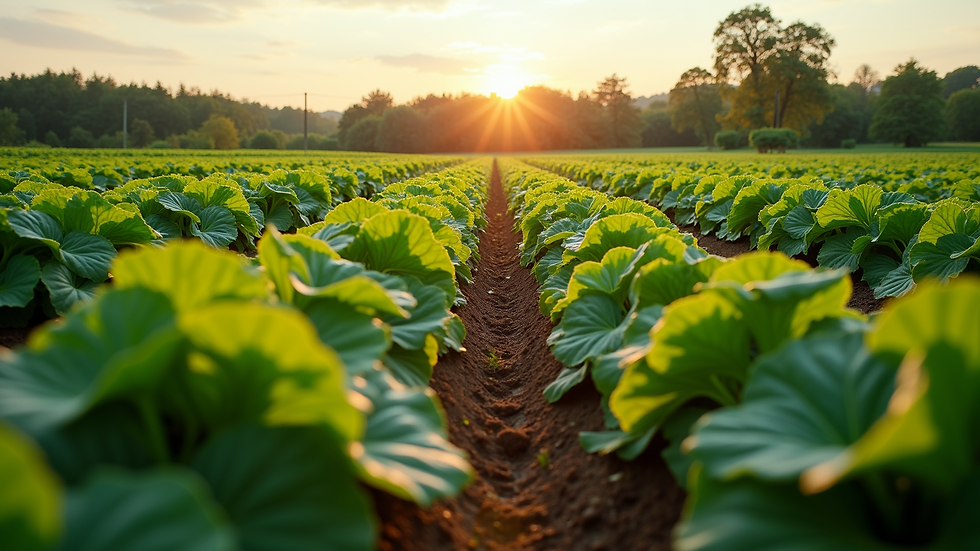Insect Protein: The Swarm Intelligence of Sustainable Eating
- Protanica

- Mar 20, 2024
- 4 min read

Introduction:
Imagine a world where the buzzing of bees, the chirping of crickets, and the fluttering of butterflies aren't just pleasant sounds of nature, but also the soundtrack to a sustainable food revolution. Welcome to the world of insect protein, where the humble bug is being hailed as the key to feeding the planet's growing population while minimizing our environmental impact.
You see, as the world's population continues to soar, so does the demand for protein. But traditional livestock farming takes a heavy toll on the planet, contributing to deforestation, greenhouse gas emissions, and water scarcity. We need a smarter, more sustainable solution – and that's where insects come in.
The Hive Mind of Nutrition:
Insects may be small, but they pack a powerful nutritional punch. Many species are rich in protein, healthy fats, and essential micronutrients like iron and calcium. In fact, some insects boast protein levels comparable to beef or soy, but with a fraction of the environmental footprint.
Take crickets, for example. These chirpy little critters require 12 times less feed than cattle to produce the same amount of protein, and they emit far fewer greenhouse gases in the process. They're also incredibly water-efficient, needing just a fraction of the H2O that goes into raising traditional livestock.
But the nutritional benefits of insects go beyond just numbers. The protein found in many insect species is highly bioavailable, meaning our bodies can easily digest and absorb it. Plus, some insects contain chitin, a type of fiber that may have prebiotic properties, supporting the growth of beneficial gut bacteria.
The Swarm Intelligence of Sustainability:
But the real buzz around insect protein isn't just about nutrition – it's about sustainability. Just like a swarm of bees works together to pollinate crops and maintain ecosystems, the collective power of insects could help us create a more sustainable food system.
You see, insects are incredibly efficient at converting feed into protein. They require less land, water, and energy than traditional livestock, and they can be raised on organic waste streams like food scraps and agricultural byproducts. This means we could potentially feed more people with fewer resources, all while reducing our environmental impact.
But the sustainability benefits of insect protein don't stop there. Many insect species can be raised in vertical farming systems, maximizing land use and minimizing transportation costs. And because insects are so small and reproduce quickly, they can be raised in urban environments, bringing food production closer to where people live.
The Buzz-Worthy Future:
So, what does the future of insect protein look like? While the idea of crunching on crickets or slurping down silkworm soup may still seem a bit "out there" to some, the trend is quickly gaining mainstream buzz.
Already, we're seeing insect-based products hitting supermarket shelves and restaurant menus around the world. From cricket protein bars to mealworm burgers, these creepy-crawly creations are winning over curious eaters with their unique flavors and eco-friendly credentials.
And as the demand for sustainable protein grows, we can expect to see even more innovation in the insect agriculture industry. Researchers are exploring new ways to optimize insect farming, from genetic engineering to automated harvesting systems. Some companies are even investigating the potential of using insects to recycle plastic waste or produce biofuels.
The Hive Mentality:
Of course, the path to widespread acceptance of insect protein won't be without its challenges. There are cultural barriers to overcome, regulatory hurdles to navigate, and squeamish stomachs to sway.
But just like a beehive works together for the greater good of the colony, the success of the insect protein movement will depend on collaboration and collective action. It will take a swarm of farmers, entrepreneurs, researchers, chefs, and curious consumers working together to bring this buzzy vision to life.
And who knows? In a few decades, we may look back on the idea of eating insects not as a novelty or a necessity, but as a normal part of a sustainable, diverse, and delicious diet. We may marvel at the way these tiny creatures helped us feed the world while protecting the planet, one crunchy, creepy, crawly bite at a time.
So there you have it – the swarm intelligence of insect protein. It may sound like something out of a science fiction novel, but the reality is that these little bugs could hold the key to a more sustainable, nutritious, and resilient food system.
As we face the daunting challenges of climate change, population growth, and resource scarcity, we need all the tools we can get to build a better future. And insects? They might just be the secret weapon we've been overlooking.
So the next time you hear the buzz of a bee or the chirp of a cricket, don't just think of it as a pleasant sound of nature. Think of it as a rallying cry, a call to action, a reminder that even the smallest creatures can make a big impact.
The future of food is swarming with possibility, and it's up to all of us to join the hive mind and make it a reality. So let's spread our wings, let's raise our antennae, and let's get to work. The world is counting on us, and the bugs are ready to lead the way.




Comments